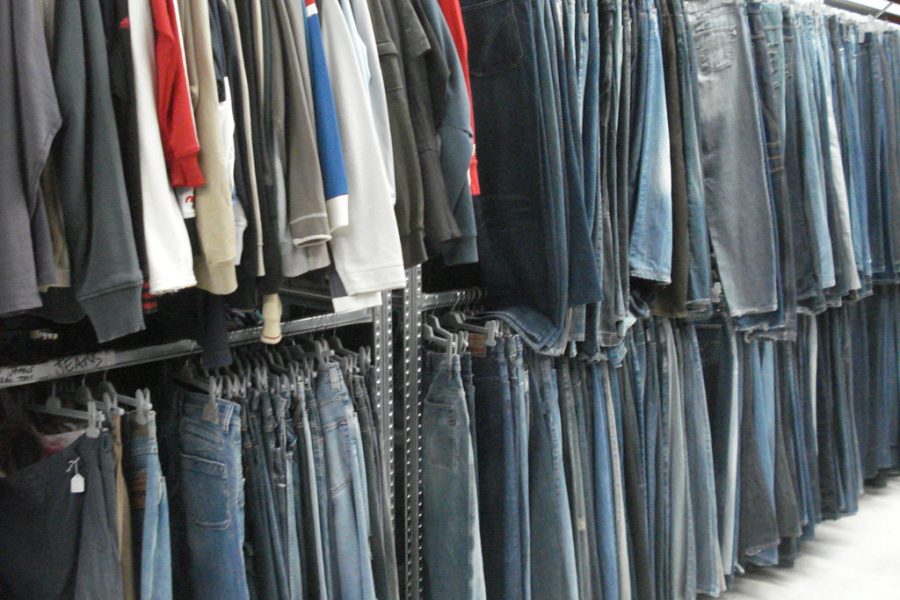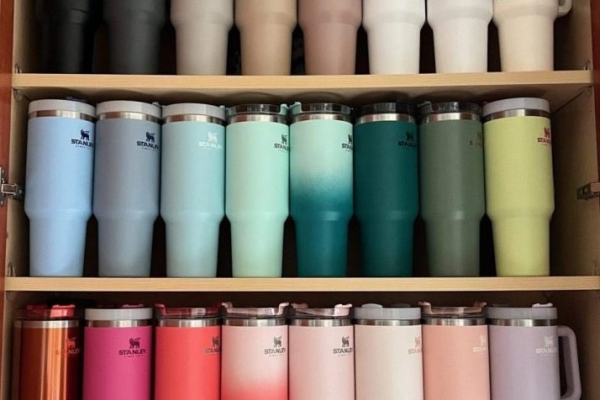THE DIRE CONSEQUENCES OF FAST FASHION
Throughout the years fashion trends have come and go, leaving a defining mark on each decade. From bell bottoms in the 70s, to track suits in the 2000s, there has been one thing that hasn’t changed; the fact that anything that goes in style has to eventually go out of style.
In the past, fashion trends have largely been under the control of a limited number of celebrities whose fashion choices aimed to be replicated by many. Since the emergence of social media however, this cycle has sped up drastically due to the ability of anyone to gain a following and hold influence over what is trendy. Because of this surge in the number of trendsetters, there is also a rise in the number of trends that emerge, and a decrease in the amount of time in which they hold traction. This ultimately leads to a great increase in the amount of clothes being produced as well as thrown away, which has detrimental effects on the treatment of workers in the industry, as well as environmental health.
Fast fashion is a business model that has taken advantage of and amplified the harm of this increasingly consumerist society. It enables large quantities of clothing to be produced at a rapid pace and sold at low prices. The high speed that the clothes are manufactured at, as well as the affordability and accessibility of a multitude of different styles encourages consumers to buy more clothes than necessary in order to keep up with the constantly changing trends. As a result, the average consumer today buys 60% more pieces of clothing than 15 years ago, and keeps each piece for half as long, according to the United Nations Environment Programme (UNEP). This overconsumption has several detrimental effects.
One effect is harming human health and human rights. Though the United States is the highest consumer of clothing in the world, 90% of clothing is manufactured in Low Middle Income Countries (LMICs), mainly China and Bangladesh. The manufacturing of clothing products in LMICs makes the cheap prices possible, as the workers are severely underpaid for their labor. In addition, there aren’t occupational or safety standards that protect worker’s safety or prevent the use of child labor. There have been cases of lung disease and cancer, reproductive harm, injuries, and deaths of workers in LMICs. The terrible treatment these workers face is due to the industry’s prioritization of selling as much clothing as possible while disregarding the impact this has on human beings.
There are also significant environmental risks. The vast majority of clothing sold in America is made with cotton or polyester, which are low quality materials that are used in order for the prices to remain low. The poor quality is not only another factor that leads to clothing needing to be frequently replaced, but both of these products are also harmful to the environment. Cotton uses huge amounts of water to grow. In fact it takes about 3,000 liters of water just to make a single cotton shirt. This extreme amount of water used contributes to the fact that, according to the UNEP, the industry generates around 20% of the world’s wastewater, making it the second largest consumer of water. Cotton also uses many pesticides, which can cause numerous health issues in humans including cancer, alzheimers, and birth defects and can also kill animals and contaminate streams and lakes.
Polyester on the other hand is created using oil, which is harmful because oil drilling can displace animals and even kill off entire ecosystems. It is crucial that there are cuts to the use of oil because according to the Millennium Alliance for Humanity and Biosphere (MAHB), at this rate the world’s oil reserves will be depleted by 2052. In addition, polyester uses large quantities of plastic, which harms marine ecosystems and plastic microfibers can even end up in human food through marine life, creating a threat to human health. The use of polyester creates a large amount of carbon emissions which contributes to the fact that, according to the UNEP, the industry is responsible for 8-10% of carbon emissions, which is more than all international flights and maritime shipping combined.
The dyeing of textiles is problematic as well. The wastewater from the dyes can get into local waterways and release toxicants which are hazardous to animals and nearby residents. This is a big reason why environmental threats hit LMICs especially hard, as those living near facilities where clothing is made are more likely to be impacted. These countries also don’t have environmental regulations that prevent untreated water from entering oceans.
Ultimately, the solution to these issues is the hands of companies and the government. There are ways to create clothing with environmentally conscious materials, such as natural cellulosic fibers and protein fibers or manufactured fibers such as Lyocell, which are all sustainable.
There also needs to be improvement in the treatment and wages of laborers. By outsourcing the manufacturing to other countries, the U.S. thinks they can neglect taking responsibility for the modern day slavery that is used to produce products that are sold in America. Anyone with basic morals can see that whatever the risk to the amount of products sold and profits made, the corporations need to take initiative to halt production until conditions improve. Companies have the ability to change their practices, if they would be willing to put the health of humans and the environment ahead of their own economic gain.
Consumers also have a responsibility to make more mindful decisions. About 85% of clothing bought by Americans end up in landfills, so it is imperative to buy clothes you know you will keep, and to never throw clothes away. It is easy to donate old clothing to thrift stores, or to sell them on apps like Depop or Poshmark in order to avoid further escalating the problem.
Unfortunately, higher quality, eco-friendly products are often more pricey than those created using the fast fashion model, meaning it isn’t possible for everyone to buy from environmentally conscious brands. This being said, it can even save money to invest in a few high quality pieces that will last a long time, rather than buying large quantities of clothes that often need to be replaced. If you are able, brands such as Patagonia, Reformation, and Levi’s, as well as thrift stores are all sustainable options.
The most important thing for consumers to do is simply to consume less. The culture of shopping in America is only on the rise, while the circumstances are becoming progressively more dire. We are all accountable for doing our best to combat the pressure to mindlessly consume, and to remember what really holds value.

Hi I'm Chelsea, I'm a senior and one of the editors of the paper. I love music and the environment.










